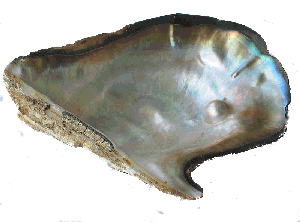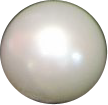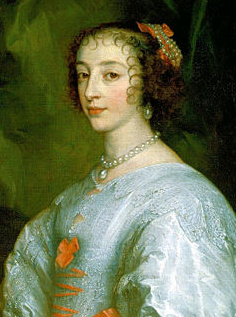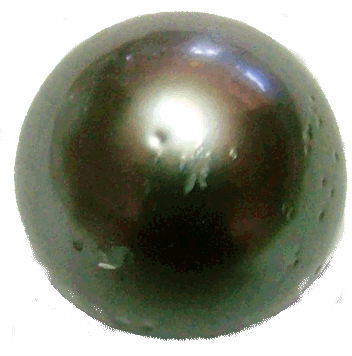
Pearl
Pearls were believed to be tears of the gods or dew from the moon, the Chinese believed they only formed in moonlight. A symbol of purity and innocence and symbolising tears.
In fact pearls are caused when an irritant, such as a grain of sand, enters a mollusc shell, as a natural defence system the mollusc secretes aragonite or nacre which builds up over time in thin layers to form a pearl. Man has taken advantage of this defence system, to form 'cultured' pearls, by introducing the irritant ... normally a tiny mother of pearl bead or shape.
There are various colours and qualities of pearls depending on their origin. Today a majority of pearls come from the Orient, however Britain itself used to be pearl-rich, with Scottish (from the Dee and the Tay rivers) and Welsh (from the River Conwy) stones.

The Abernethy Pearl of Scotland
Pearls become so popular during the Tudor reign that many were fakes, Elizabeth I of England once paid two pence for several hundred imitation pearls. Trading with China increased at this time, meaning more pearls became available, starting a fashion which lasted for centuries.

Henrietta Maria is said to have owned a Conwy Pearl.
It is said that the crown of Queen Henrietta Maria, wife of Charles I of Britain, contained a Conwy pearl given to her by Richard Wynne, owner of Gywdir Castle, who became her treasurer in 1625. However the pearl was lost when Parliament broke up the crown jewels after Charles was beheaded in 1649.
Freshwater pearls become chalky over time, saltwater pearls keep their magnificent lustre.

A South Sea Pearl with signature dimples
Black pearls from the Southern Seas are highly prized and contain dimples from grains of sand, which helps make them distinguishable from fake pearls.
| Latest Trends | Ordering Information | debbie@silkpixie.com | Delivery & Returns |


